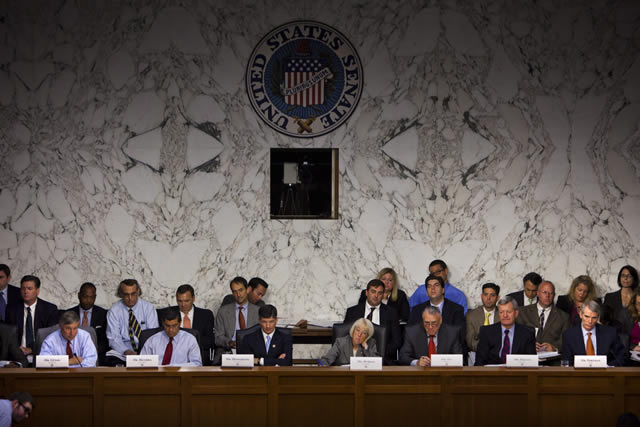Next month, the “super committee” will release its plan to find savings in the federal budget over the next decade. A report from the Senate Finance Committee Republicans outlines a possible route forward and includes reforms to reduce unaffordable federal spending on health care and improve programs like Medicare and Medicaid.
Several of the ideas outlined in the report are similar to The Heritage Foundation’s own Saving the American Dream plan to reduce the debt and restore prosperity. The Heritage plan also offers additional details on how to achieve some of the broader budget goals put forth.
The Daily Signal depends on the support of readers like you. Donate now
Heritage health policy expert Nina Owcharenko writes, “If the goal is producing $1.2 trillion to $1.5 trillion in 10-year savings, the Joint Select Committee on Deficit Reduction must think big and produce recommendations with real substance. Nothing could be truer than dealing with the health care savings component.”
To address Medicare’s insolvency, the Senate Finance Republicans propose changing the eligibility age, tackling the over-utilization of services encouraged by supplemental coverage, introducing a catastrophic coverage benefit, and unifying the deductibles for Parts A and B. Saving the American Dream would transition traditional Medicare to a premium-support system, incorporating several of these elements along the way. As health policy expert Robert Moffit explains in a new paper:
During the first stage, a five-year transition period, Congress should make changes to the current program. It should add a catastrophic benefit and restructure the role of supplemental insurance, gradually increase the beneficiary share of Medicare premiums, restructure the existing taxpayer subsidies for upper-income retirees, and gradually phase out the subsidies for the wealthiest Americans.
The super committee is also encouraged to address geographic variations in Medicare spending and realign provider payment so that it encourages appropriate care and more accurately reflects the cost of medical services. Heritage’s plan to implement premium support would achieve all of these goals.
Seniors would use a federal contribution based on their retirement income to choose a private health plan that would offer, at a minimum, the standard Medicare benefits package. The contribution would be based on the average weighted premiums offered by the available plans, reflecting actual market conditions.
Spending on Medicaid—the federal–state partnership to provide health care for the poor, elderly, and disabled—also presents significant budgetary concerns. The Senate Finance Republicans propose putting federal Medicaid contributions on a defined budget and giving states increased flexibility to tailor their programs to their state’s needs.
Saving the American Dream separates out the dramatically different demographics served under Medicaid. Healthy moms and kids are mainstreamed into private health insurance with the help of federal tax relief and additional subsidies for low-income families alongside commonsense insurance market reforms. For the disabled and elderly, who represent the most vulnerable population covered by Medicaid, the Heritage plan would transition federal Medicaid funding to a block grant and give states the authority to find innovative, patient-centered approaches to best meet their needs.
Last but certainly not least, both deficit reduction proposals include the repeal of Obamacare, since, as Owcharenko explains, “The health care law adds to our nation’s fiscal crisis. It expands the failing Medicaid program by adding 17 million to 25 million more Americans on to the hemorrhaging entitlement program. It sets in place a prohibitively costly subsidies scheme that the Congressional Budget Office’s estimates put at $96 billion by 2021.”































